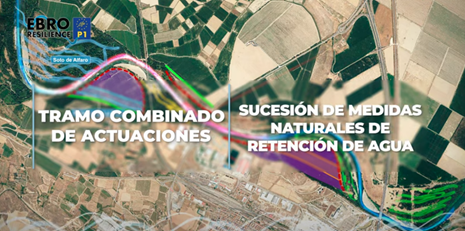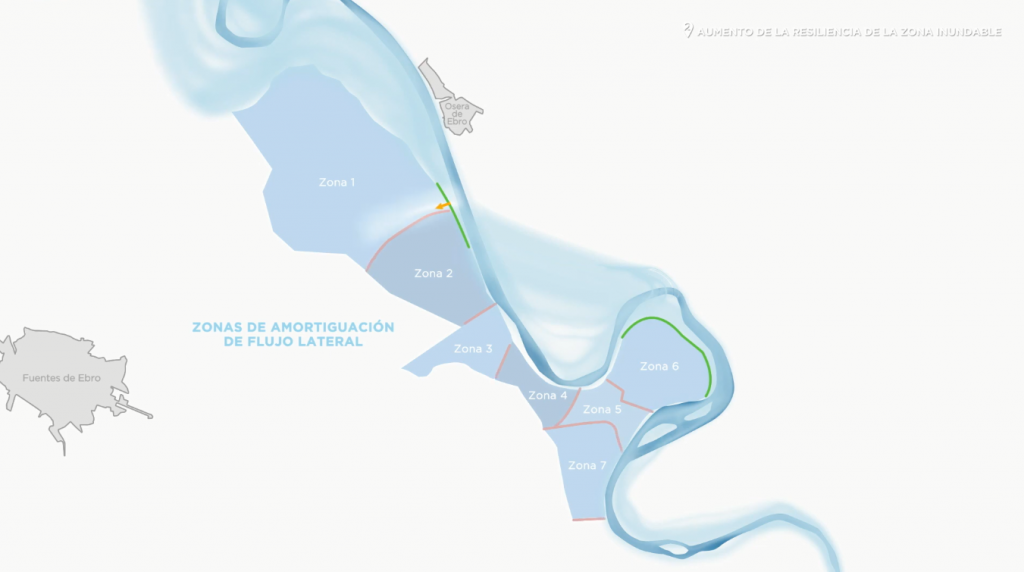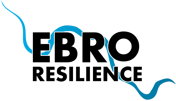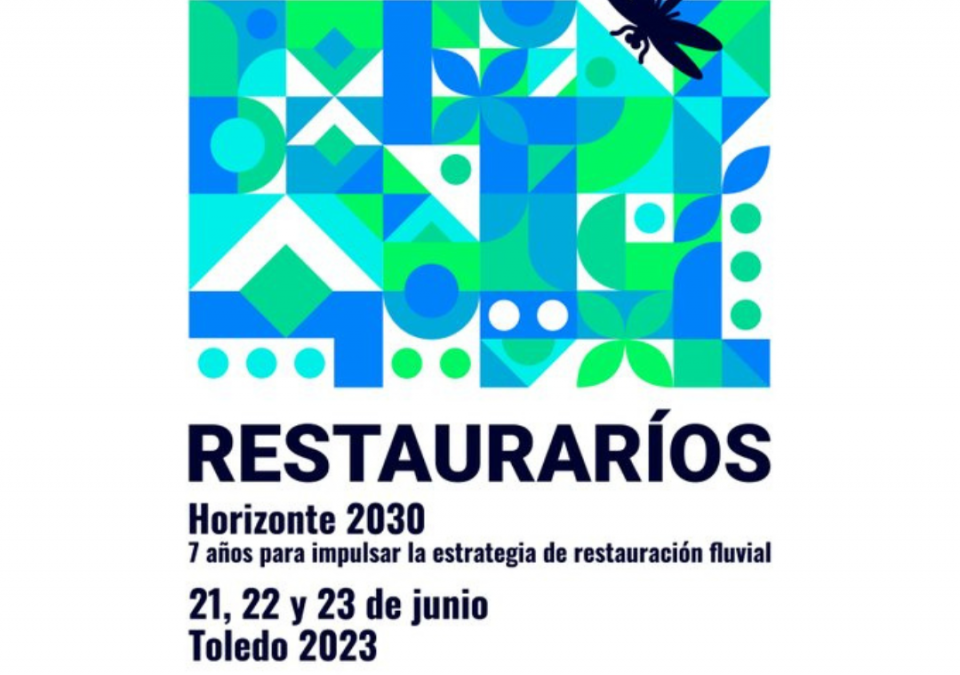The Ebro Resilience Strategy and the LIFE Ebro Resilience P1 Project will have a special role in the IV Iberian Congress of River Restoration, RestauraRios 2023which will be held next June in Toledo under the theme “Resilience for health, the natural environment and the effects of global change”.
In the plenary session of the Congress, the most important event on river interventions and a meeting forum for reflection and exchange of experiences, the LIFE Ebro Resilience P1 Project will be presented as an outstanding action at European level.
The works already underway in the combined section of actions, defined as Zone 1, between Alfaro (La Rioja) and Castejón (Navarra), will be discussed, with a view to the concept of recovering river space in order to reduce impacts. The restoration proposal and the construction of lateral buffer areas, pre-flood space to reduce damages, which have been defined in Zone 2, in the Osera de Ebro-Fuentes de Ebro section (Zaragoza), will also be presented.


Another of the issues that the Ebro Resilience team is bringing to this forum is the public participation program, one of the keys to both the Strategy and the LIFE project. In addition, a space for reflection on the availability of land for river restoration actions will be opened.
In addition to the contributions at the round tables and colloquiums and in the plenary, posters will also be presented on specific actions, such as phase 1 of the “Morphological adaptation and environmental restoration in the El Ortigoso site, in Milagro, Navarra.“; the “Environmental restoration of the El Estajao site, in Alfaro, La Rioja“or the already concluded “River restoration of the La Nava site, Alfaro, La Rioja“.
In addition, in Toledo will be presented other interventions in execution or in project in the Ebro basin integrated in the River Restoration Strategy of the Ministry for Ecological Transition and the Demographic Challenge: Phase 3 of the “Hydrological connection and habitat improvement in the meanders of the Arga, in Funes, Navarra”, currently underway and the projects of the future river restorations of the river Noguera de Tor, in Barruera, La Vall de Boí, Lleida and of the river Queiles in its middle section, between Navarra and Aragón.

Congress
The Iberian Congress on River Restoration is a technical forum held every four years and in this 2023 is organized by the Iberian Center for River Restoration (CIREF) in coordination with the Tagus Hydrographic Confederation, Wetlands International – European Association and the Directorate General for Water of the Ministry for Ecological Transition and the Demographic Challenge of Spain.
From June 21 to 23, it will reflect on the health of our rivers with the 2030 horizon to promote the river restoration strategy.
Ebro Resilience
Technicians from the Ebro Hydrographic Confederation, the Government of La Rioja, the Government of Navarra (Gestión Ambiental de Navarra, S.A-GAN-NIK) and the Government of Aragón have participated in the preparation of the presentations of Ebro Resilience actions, representing one of the keys of this strategy and of the LIFE Ebro Resilience P1 Project, the coordination of administrations with the common objective of reducing the damage caused by floods, improving the ecological state of the river and local biodiversity.
Among the crucial lines is public participation as an inseparable part of flood risk management.
The Strategy that unites the Communities of La Rioja, Navarra and Aragón is a collaboration mechanism for the management of actions in the Ebro axis, specifically in the Logroño – La Zaida (Zaragoza) section, which has particular characteristics compared to other areas of the basin, with a high exposure to the phenomenon of flooding.
The LIFE Ebro Resilience P1 Project (LIFE20 ENV/ES/00327), approved by the European Commission in the LIFE 2020 call, covers three autonomous communities (La Rioja, Navarra and Aragón), has a duration of 6 years and a total budget of 13,310,350 €, with 55% European funding.
Its partners are the Ministry for Ecological Transition and the Demographic Challenge (MITECO), through its companies TRAGSA and TRAGSATEC; the Ebro Hydrographic Confederation; the Government of La Rioja; the Government of Navarra, through Gestión Ambiental de Navarra, S.A. (GAN-NIK); the Government of Aragon and the Aragonese Water Institute.

